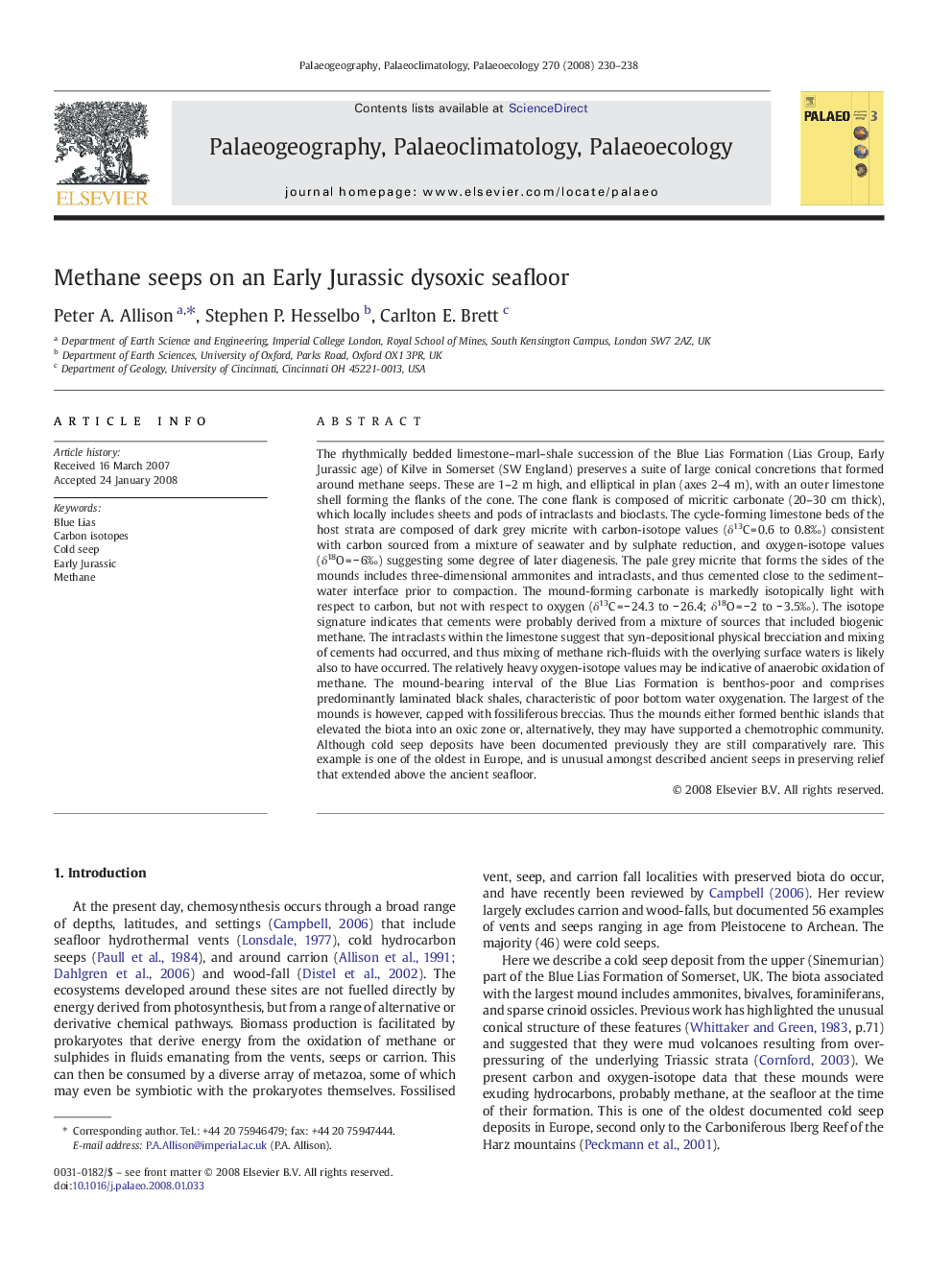| کد مقاله | کد نشریه | سال انتشار | مقاله انگلیسی | نسخه تمام متن |
|---|---|---|---|---|
| 4468292 | 1622313 | 2008 | 9 صفحه PDF | دانلود رایگان |

The rhythmically bedded limestone–marl–shale succession of the Blue Lias Formation (Lias Group, Early Jurassic age) of Kilve in Somerset (SW England) preserves a suite of large conical concretions that formed around methane seeps. These are 1–2 m high, and elliptical in plan (axes 2–4 m), with an outer limestone shell forming the flanks of the cone. The cone flank is composed of micritic carbonate (20–30 cm thick), which locally includes sheets and pods of intraclasts and bioclasts. The cycle-forming limestone beds of the host strata are composed of dark grey micrite with carbon-isotope values (δ13C = 0.6 to 0.8‰) consistent with carbon sourced from a mixture of seawater and by sulphate reduction, and oxygen-isotope values (δ18O = − 6‰) suggesting some degree of later diagenesis. The pale grey micrite that forms the sides of the mounds includes three-dimensional ammonites and intraclasts, and thus cemented close to the sediment–water interface prior to compaction. The mound-forming carbonate is markedly isotopically light with respect to carbon, but not with respect to oxygen (δ13C = − 24.3 to − 26.4; δ18O = − 2 to − 3.5‰). The isotope signature indicates that cements were probably derived from a mixture of sources that included biogenic methane. The intraclasts within the limestone suggest that syn-depositional physical brecciation and mixing of cements had occurred, and thus mixing of methane rich-fluids with the overlying surface waters is likely also to have occurred. The relatively heavy oxygen-isotope values may be indicative of anaerobic oxidation of methane. The mound-bearing interval of the Blue Lias Formation is benthos-poor and comprises predominantly laminated black shales, characteristic of poor bottom water oxygenation. The largest of the mounds is however, capped with fossiliferous breccias. Thus the mounds either formed benthic islands that elevated the biota into an oxic zone or, alternatively, they may have supported a chemotrophic community. Although cold seep deposits have been documented previously they are still comparatively rare. This example is one of the oldest in Europe, and is unusual amongst described ancient seeps in preserving relief that extended above the ancient seafloor.
Journal: Palaeogeography, Palaeoclimatology, Palaeoecology - Volume 270, Issues 3–4, 15 December 2008, Pages 230–238